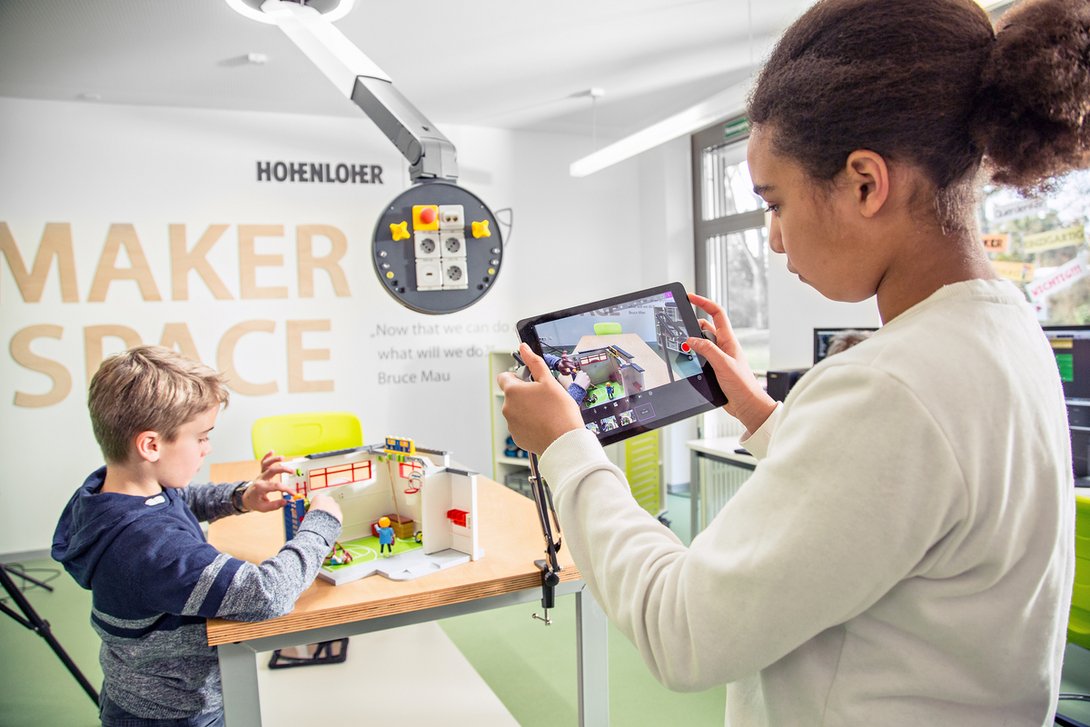Makerspace - a space for ideas
The Hohenloher makerspace is a bit like a modern, posh version of an inventor’s shed – just without the spatial restrictions. It offers everything the heart could desire in terms of multi-disciplinary education, be that in schools, in industry or even in a library.
Anyone who has ever set foot in a lovingly equipped hobby workshop or inventor’s shed, and glimpsed all of the wonderful tools and technologies, of which most can only dream, will know the feeling. Your hands immediately begin to itch, and you want to dive in yourself right away. This idea also gave wings to the makers at Hohenloher when they were developing their makerspace. The makerspace is not restricted by walls. Rather it is a 4 x 5 m space that is integrated into every room and can have a multitude of uses. For example, it can be part of a normal classroom, school science lab or study room, or even part of a laboratory, office or library hall. This is because, after all the experimenting is done, it is easy to tidy the makerspace, pack everything up and fold it all away. Chairs, height-adjustable tables and cupboards are easily rolled to one side, or rearranged and used. The accompanying ceiling installation for lighting and services, Fly One, can be folded back into the ceiling and continues to serve as a convenient source of good light.
Advice and teaching materials
There is no restriction to the direction taken when researching, tinkering or crafting. There is a wide range of modules, and Hohenloher not only offers advice, it also works with partners such as Festo to provide the necessary teaching materials. The makerspace is anything but monofunctional. It is actually intended to remove the boundaries between subjects, combine knowledge and offer space for new ideas. Just how this functions is something the pupils at the Ernst-Reuter-Schule in Karls- ruhe got to try out for themselves. Awarded the title of “Digital School” in 2018, and becoming one of the first smart schools in Baden-Württemberg in 2017 (to name but two of its numerous prizes), Hohenloher transformed a space into a makerspace. This now allows the pupils to independently create and edit video productions and stop motion animations, for example. They have access to 3D modelling and printing, electrical technology and everything you need for coding, robotics and bionics, including, of course, virtual and augmented reality.
The pupils exploit all possible opportunities
What the pupils make from all of this can be seen in a photo shoot by Hohenloher. For example, they use the new technology and every trick in the book to produce an explanatory video clip for their fellow pupils, including catchy music. And they have already programmed a drone and a small electric vehicle. “It didn’t matter whether they were in Year 5 or Year 9,” says Alexander Biller, Head of Marketing at Hohenloher. “Each child had different strengths and taught their classmates what they needed to know.” This learning from one another and the enthusiasm of the young people was also infectious for Alexander Biller, and so he came to the following decision with the Hohenloher team: “Some of the pupils will now ‘teach’ our field sales team and show them just what all the equipment can do.” New forms of learning are taking shape in the makerspace.
A concept for adult education as well
The concept is also proving to be of interest for adult education centres and libraries. Makerspaces in libraries are a big trend, as the broader public have the opportunity to try things out for themselves and develop them.
